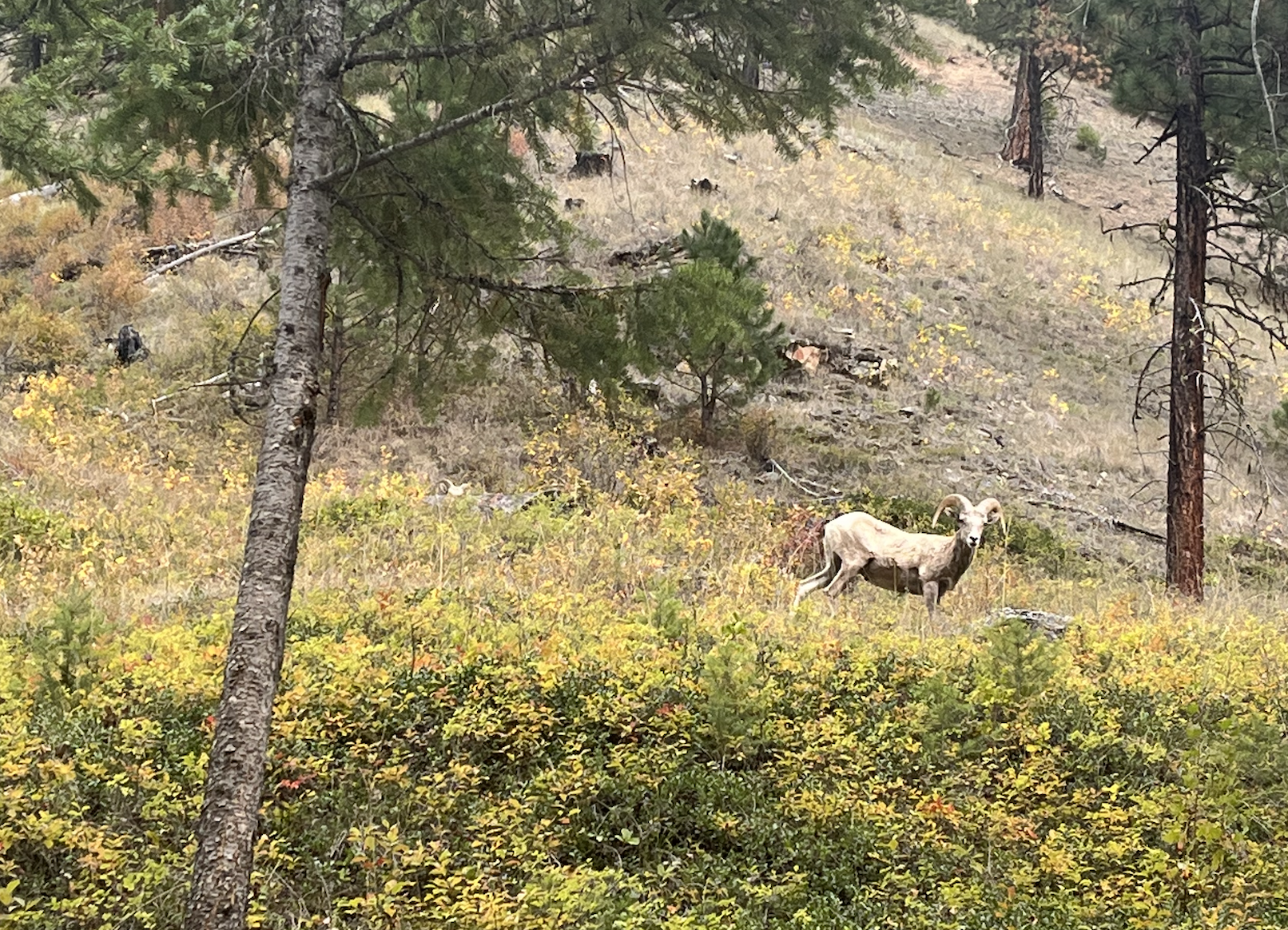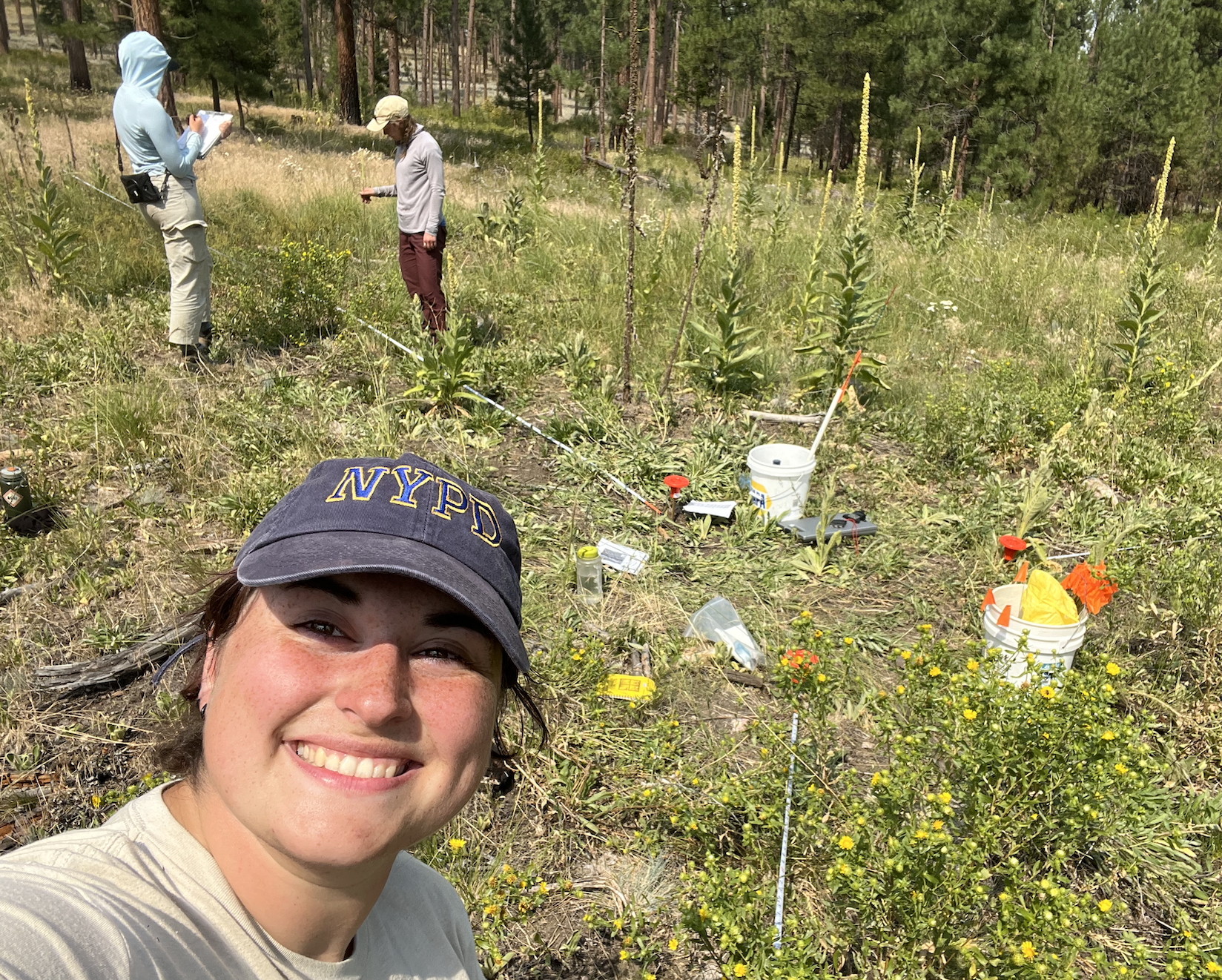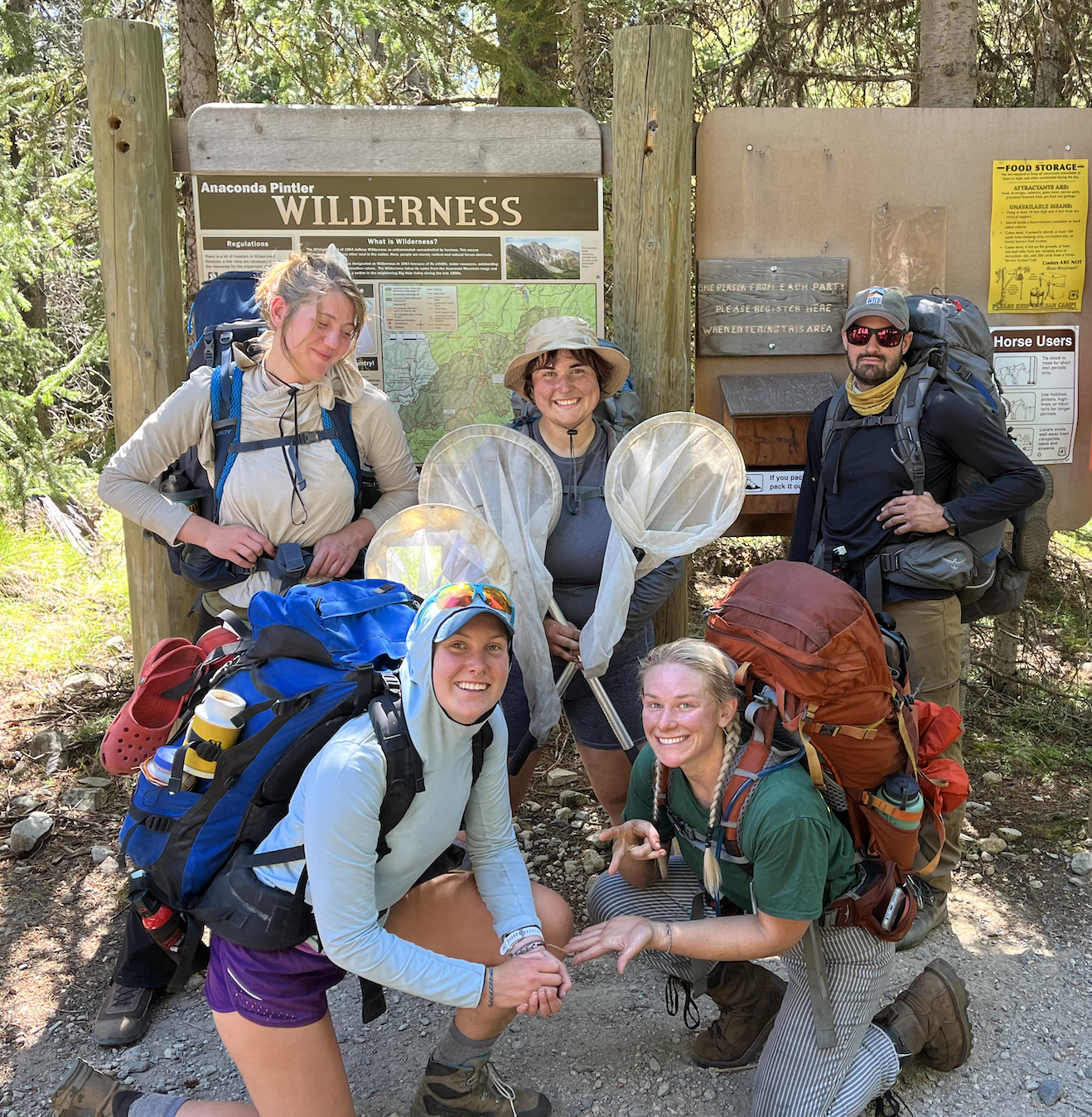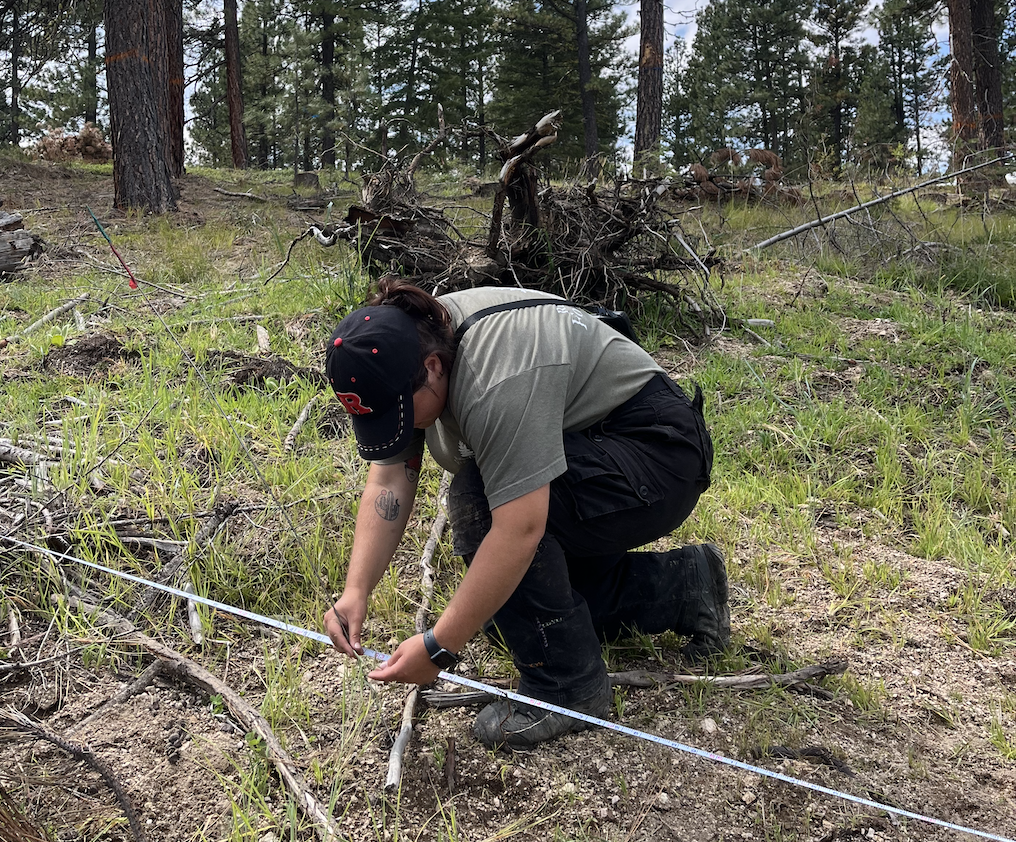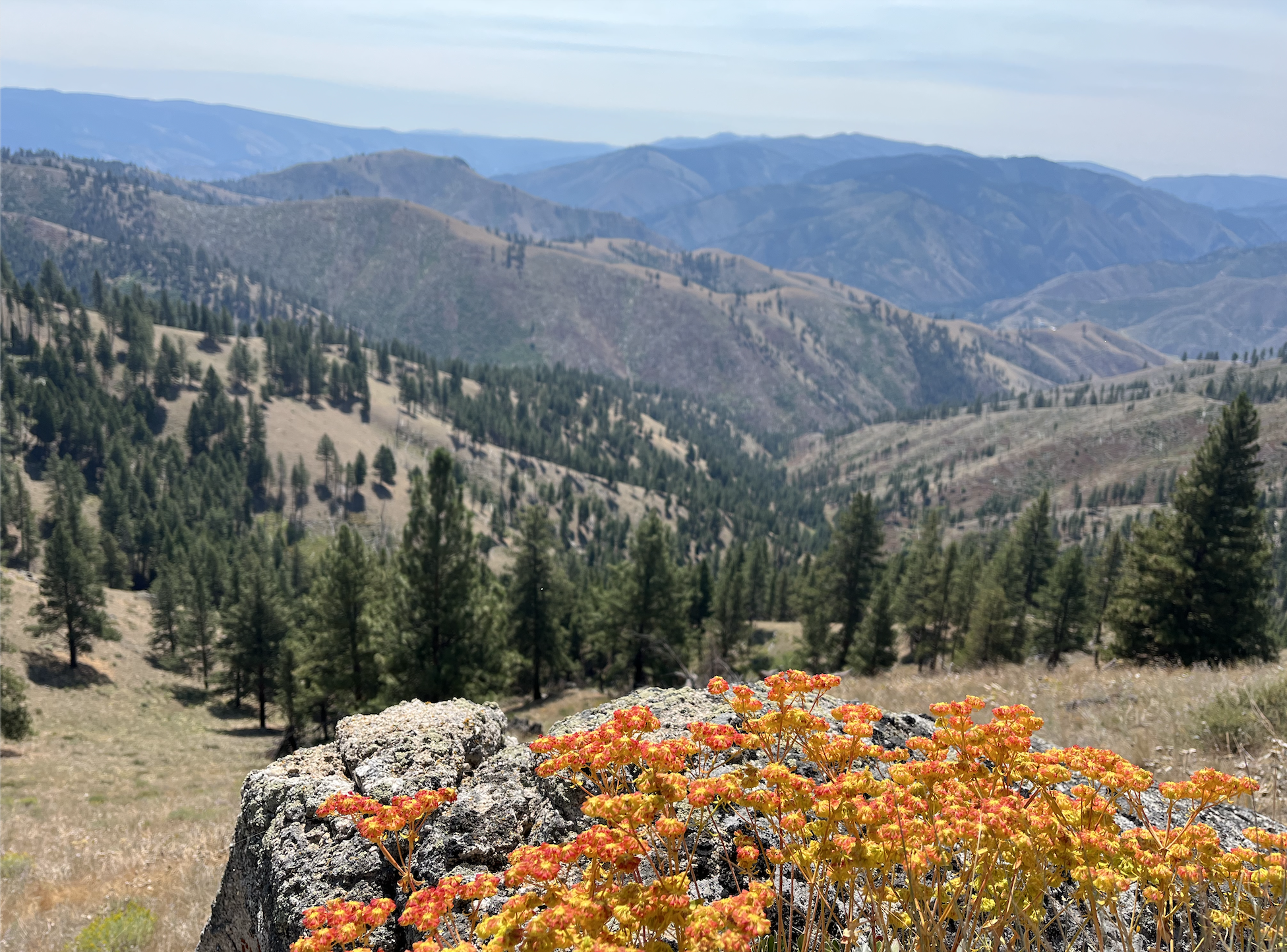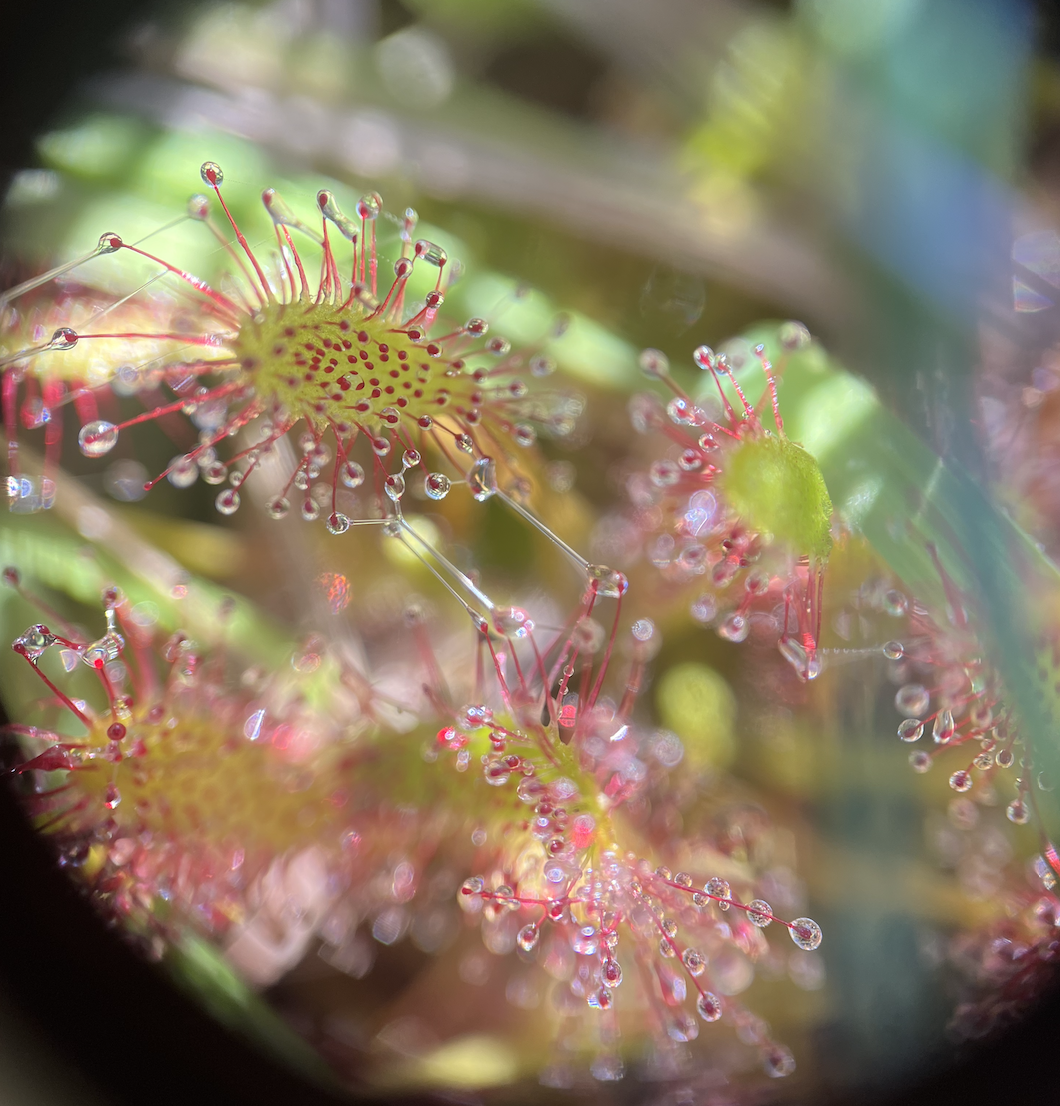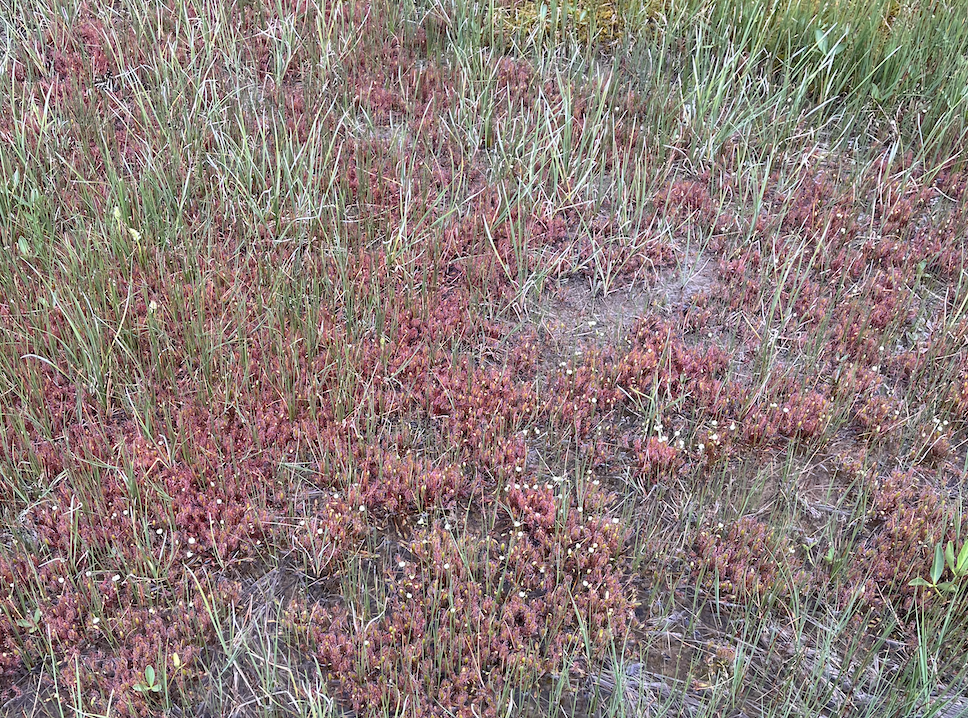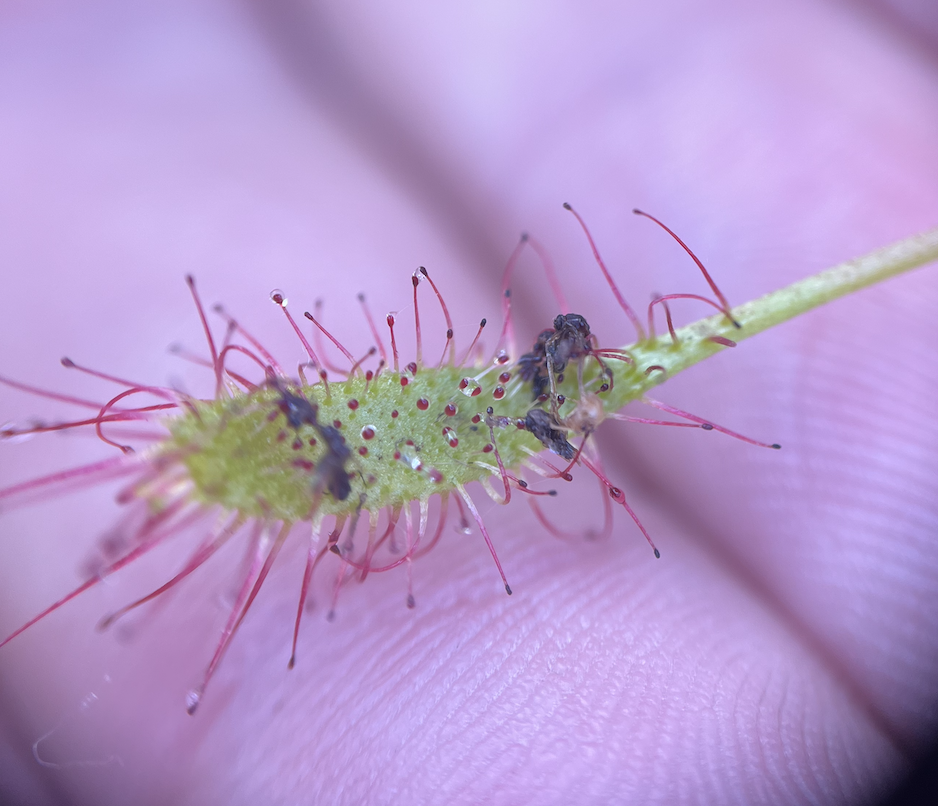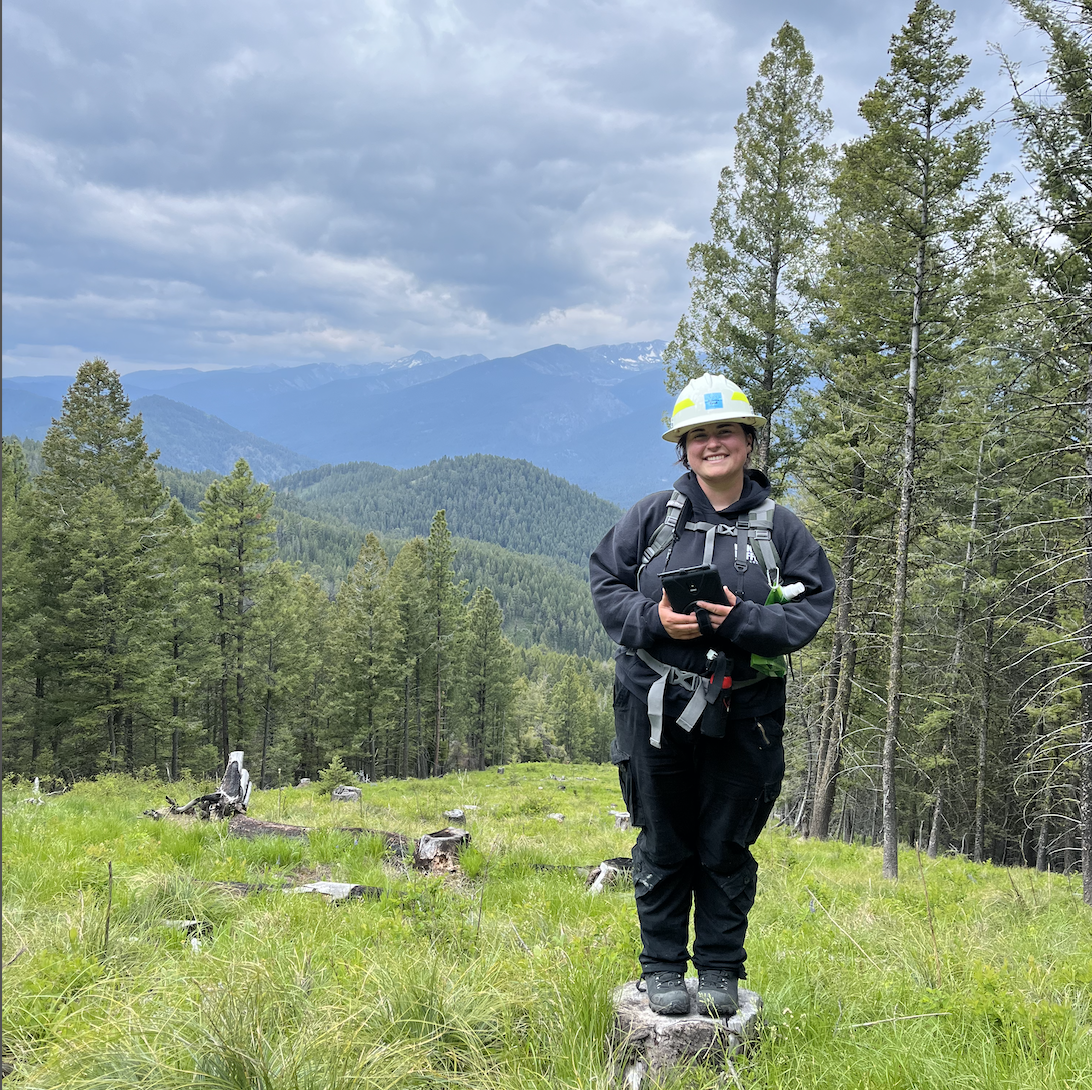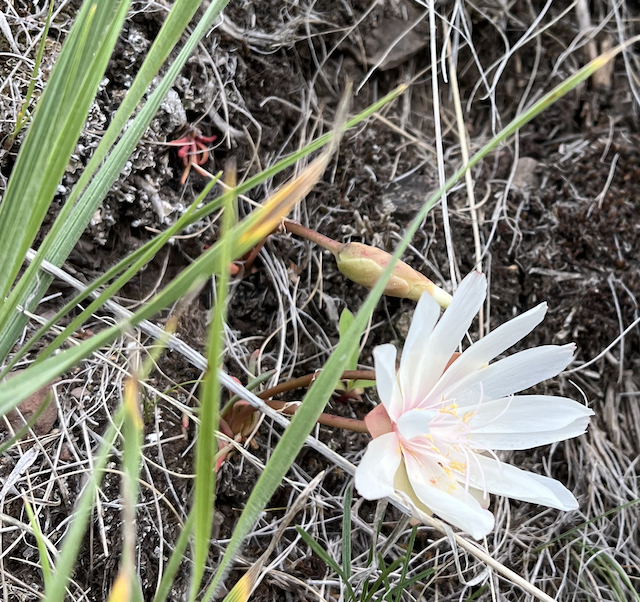We were off to a ~great~ start this month when we had a blowout driving down a mountain road! My fellow MCC intern and I found ourselves in a bit of a sticky situation when we were driving down a long Forest Service road and caught a flat tire. We luckily had one bar of service to look up how to get the tire off the back, but once we did, we were golden. It was definitely nerve racking doing this all on a hill, but the road continued at this incline for miles, so it was not feasible to keep driving to a flat location – less we want to damage the car. Either way, we fixed it and successfully changed our first tire! Peep the photo below – our Ram named “Gloria” – she has gotten us THROUGH IT this summer. Long Live Gloria!
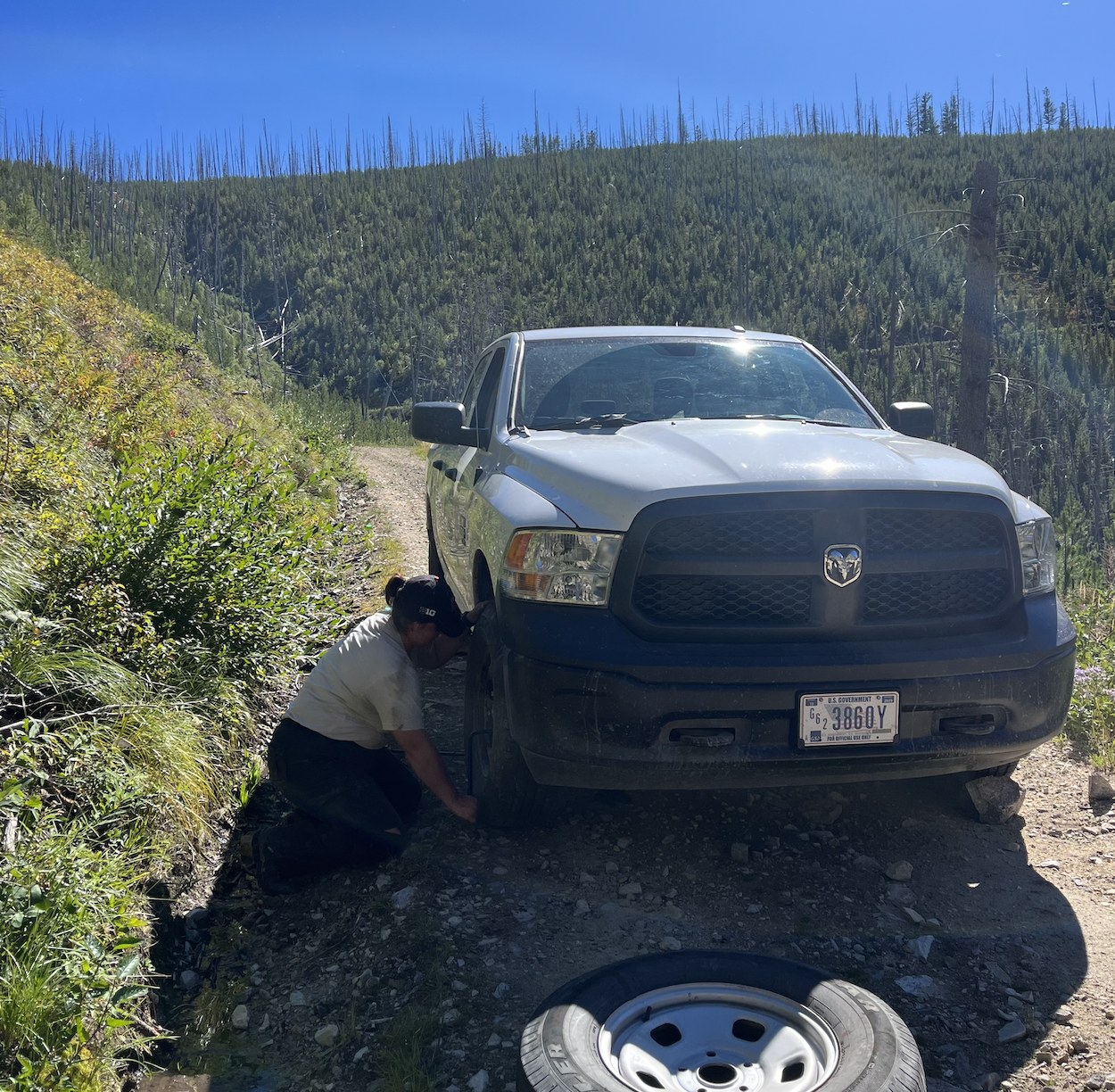
Other than the tire debacle, this month has been quite calm. Mostly seed collection – with might I say some of the best views of the valley thus far. It’s kind of amazing to think about how much of the bitterroot I’ve explored given that I’ve only been here for 4 months. I’ve surveyed miles and miles of land, driven extensively throughout the mountains, and seen acres and acres of forest. I feel very connected to the land after working on it so intensely. I don’t know where I’ll end up next, but I doubt I’ll have lunch views quite like I do now. (Sometimes I’ll just stop for a minute to admire the landscape, please don’t fire me…)
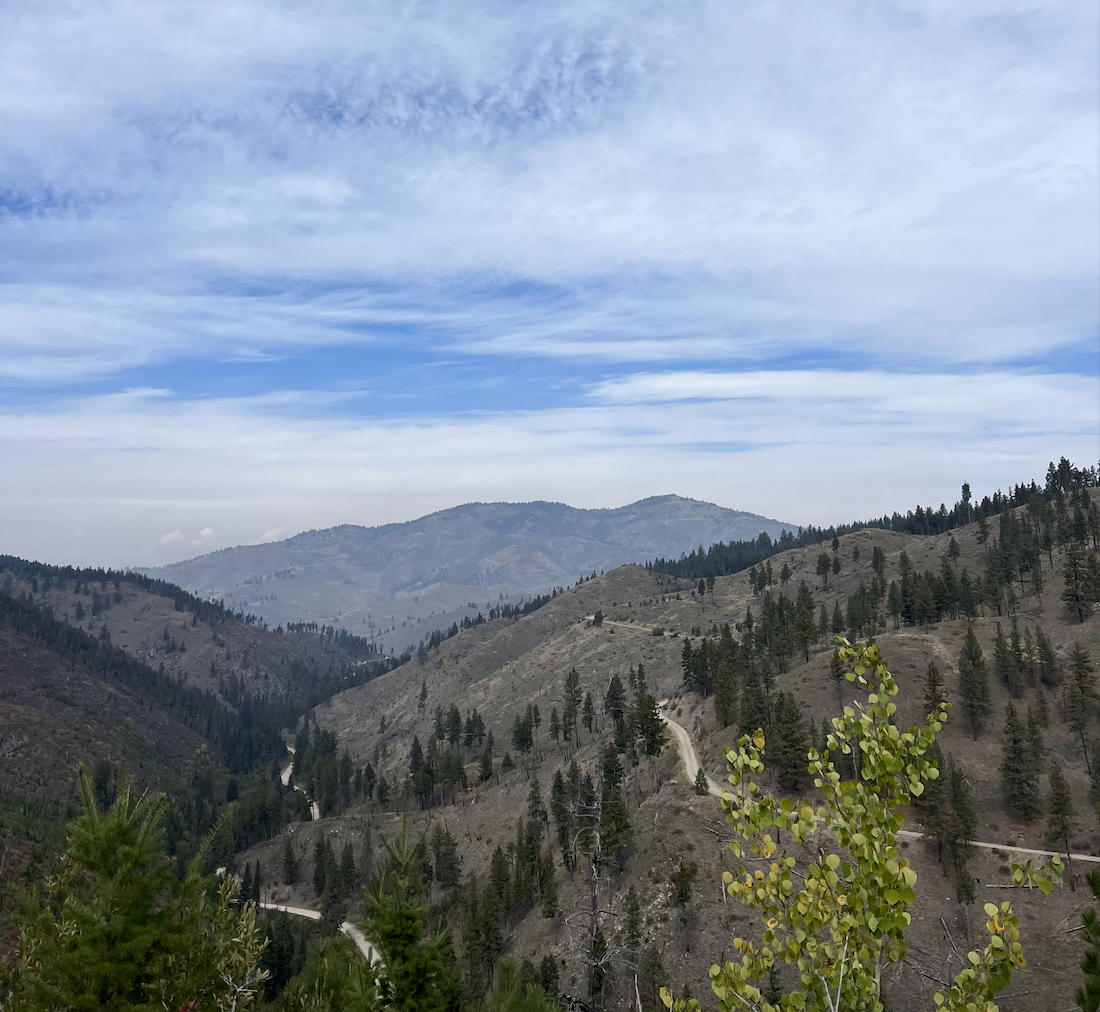
It’s also been an amazing thing to see all of the wildlife. From Elk to Big Horn Sheep, we have seen so many amazing animals that we definitely don’t have back east. I have certainly become more observant when driving and hiking, and have found so many cool things in the forest. I think at first I was just so focused on the surveying because I wasn’t used to it. I had to sit and figure out so many plants because I wasn’t too sure what I was looking at yet. Now that I am pretty confident in my plant skills, I can be more observant to my surroundings. It’s a bit sad that just as I am more confident in my skills, the season is coming to an end. I of course still have a month here, but it’s sad to see my fellow seasonals leaving, the colors changing, and leaves falling. I will say I miss Northeastern fall (there is nothing quite like the Adirondacks changing colors in peak season), but the golden hues are ~almost~ as homey. I’m a bit nervous for the snow to begin in the valley, although it already has in the higher altitudes, but I am so excited to see how pretty it looks here with a fresh blanket of snow.
